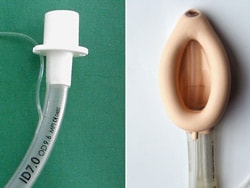Determining what type of airway management strategy to implement for a patient having an out-of-hospital cardiac arrest (OHCA) is a complex decision that involves a broad range of variables.
In a multicenter, cluster randomized, prospective clinical trial published in JAMA ,[1] researchers analyzed 9289 patient encounters from four ambulance services in England between June 2015 and August 2017 to determine whether using a supraglottic airway device was superior to tracheal intubation in patients experiencing OHCA.

Inclusion criteria required patients to be older than 18 years of age and to have had a nontraumatic cardiac arrest. A total of 764 paramedics were randomly assigned to perform tracheal intubation, and 759 paramedics were randomly assigned to perform supraglottic airway device placement.
The primary outcome was a modified Rankin Scale score at hospital discharge or 30 days after OHCA. The modified Rankin Scale score was divided into good (scores of 0 to 3) and bad (scores of 4 to 6) outcome subgroups. Secondary outcomes included ventilation success, regurgitation, and aspiration.
Overall, 4886 patients received the supraglottic airway device and 4410 patients underwent tracheal intubation. Of the patients in the supraglottic airway device group, 6.4% had a good outcome compared with 6.8% of patients in the tracheal intubation group.
